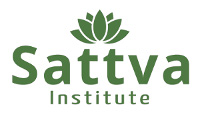Trauma Therapy in Boulder, Colorado
Trauma is a deeply distressing and overwhelming experience that can have lasting effects on an individual’s mental, emotional, and physical well-being. Whether it stems from a single event or prolonged exposure to adverse circumstances, trauma has the power to shape our lives in profound ways. However, through the power of trauma therapy, individuals can embark on a journey of healing, reclaiming their lives, and building resilience. In this blog post, we will explore the concept of trauma therapy, its benefits, different approaches, and the path to recovery.
Trauma Therapy in Boulder, Colorado
At the Sattva Institute we offer Trauma Therapy sessions in Boulder, Colorado in person, where we are based, as well as sessions over zoom.
Somatic Trauma Therapy
 Somatic therapy, also known as somatic experiencing or somatic psychology, is a therapeutic approach that recognizes the interconnectedness of the mind and body in the experience and healing of trauma. It focuses on the body’s sensations, movements, and physiological responses as gateways to processing and resolving trauma-related distress.
Somatic therapy, also known as somatic experiencing or somatic psychology, is a therapeutic approach that recognizes the interconnectedness of the mind and body in the experience and healing of trauma. It focuses on the body’s sensations, movements, and physiological responses as gateways to processing and resolving trauma-related distress.
The underlying principle of somatic therapy is that trauma is not only stored in our minds but also in our bodies. When individuals experience trauma, their nervous systems can become dysregulated, leading to symptoms such as hypervigilance, anxiety, dissociation, and physical discomfort. Somatic therapy aims to help individuals release the held energy and tension in their bodies, restore balance, and support the body’s innate capacity to heal.
Here are key aspects and techniques we commonly use working with clients who come to see us in Boulder, and from all over the world:
- Body Awareness: Somatic therapy emphasizes developing an increased awareness of bodily sensations, movements, and felt experiences. Clients are encouraged to pay attention to the present moment and notice any physical sensations or changes that arise as they explore their emotions and memories.
- Tracking Sensations: Therapists guide clients to identify and track sensations in their bodies that are related to trauma or emotional distress. This process can involve noticing areas of tension, temperature changes, tightness, or other bodily sensations associated with traumatic memories or triggers.
- Pendulation: Pendulation is a technique used in somatic therapy to help individuals navigate between sensations of safety and discomfort. By oscillating between experiencing areas of the body that feel grounded and regulated and areas that hold tension or discomfort, clients gradually expand their capacity to tolerate and process trauma-related sensations.
- Titration: Titration involves breaking down the processing of trauma into smaller, manageable pieces. Therapists support clients in exploring traumatic memories or experiences in a gradual and controlled manner, ensuring that they do not become overwhelmed by the intensity of emotions or physical sensations.
- Resourcing: Somatic therapy emphasizes the importance of building internal and external resources to support clients in their healing journey. These resources can include establishing a sense of safety, cultivating self-compassion, using grounding techniques, and accessing supportive relationships.
- Somatic Experiencing: Developed by Peter A. Levine, Somatic Experiencing (SE) is a specific modality within somatic therapy. It focuses on renegotiating and completing the body’s instinctual responses that were interrupted during the traumatic event. SE facilitates the discharge of held energy and helps individuals regain a sense of safety and resilience.
- Movement and Expression: Somatic therapy may involve incorporating movement, breathwork, or expressive arts to support the release and integration of trauma. This can include activities like dance, yoga, martial arts, or engaging in creative expression through art, writing, or music. Here in Boulder we are lucky to have many options.
The goal of somatic therapy is to help individuals restore their innate ability to self-regulate and find a sense of safety, connection, and embodiment. By addressing the physical aspects of trauma and engaging the body’s wisdom, somatic therapy can complement other therapeutic approaches and contribute to a holistic healing process for individuals impacted by trauma.

Understanding Trauma- What it Is
Trauma is a response to a distressing or life-threatening event that exceeds a person’s ability to cope. It can manifest as a result of various experiences, such as physical or sexual abuse, natural disasters, accidents, combat, or witnessing violence. Trauma affects individuals differently, often leading to symptoms like anxiety, depression, flashbacks, nightmares, hypervigilance, avoidance, and emotional numbing.
Post Traumatic Stress Disorder (PTSD)
PTSD is a mental health condition that can develop after experiencing or witnessing a traumatic event. It can occur in response to a single traumatic incident or prolonged exposure to distressing circumstances. Common causes of PTSD include physical or sexual assault, natural disasters, accidents, combat, or any other life-threatening event.
At our clinic in Boulder we see many people who have experienced stressful events in the course of their lives, some of which can certainly be considered traumatic. PTSD occurs when we are confronted with the most serious of these events.
Symptoms of PTSD typically fall into four categories:
- Intrusive Symptoms: These involve recurring and distressing memories, flashbacks, nightmares, or intense psychological or physiological reactions triggered by reminders of the traumatic event.
- Avoidance Symptoms: Individuals with PTSD often avoid people, places, activities, or situations that remind them of the trauma. They may also try to suppress thoughts, feelings, or memories associated with the event.
- Negative Changes in Mood and Cognition: PTSD can lead to a negative shift in one’s beliefs, emotions, and thoughts. This may include feelings of guilt, shame, detachment, difficulty experiencing positive emotions, memory problems, or distorted beliefs about oneself and the world.
- Hyperarousal Symptoms: Individuals with PTSD may experience heightened states of arousal, including hypervigilance, irritability, difficulty concentrating, sleep disturbances, and exaggerated startle responses.
Complex Trauma Issues
Complex Traumatic Stress, sometimes referred to as (C-PTSD) is a condition that shares similarities with PTSD but arises from repeated and prolonged exposure to traumatic events, particularly in interpersonal relationships. C-PTSD is often associated with chronic childhood abuse, neglect, or other traumatic experiences that occur within a relationship dynamic.
In addition to the symptoms of PTSD, individuals with C-PTSD may experience the following:
- Emotional Dysregulation: C-PTSD can result in difficulties regulating emotions, including intense and unpredictable mood swings, emotional outbursts, and a persistent sense of emotional emptiness or numbness.
- Distorted Self-Perception: Individuals with C-PTSD often have a negative self-image, feelings of worthlessness, and a deep sense of shame. They may struggle with self-esteem, identity, and maintaining a stable sense of self.
- Interpersonal Difficulties: C-PTSD can significantly impact relationships. Individuals may have difficulties with trust, forming and maintaining healthy connections, setting boundaries, and experiencing intimacy. They may also exhibit patterns of either excessive compliance or defiance in relationships.
- Somatic Symptoms: C-PTSD can manifest as physical symptoms such as chronic pain, gastrointestinal issues, headaches, and other stress-related health problems

The Role of Trauma Therapy
 Trauma therapy is a specialized form of therapy designed to help individuals recover from the effects of trauma. It provides a safe and supportive environment for clients to explore their experiences, process their emotions, and develop healthy coping mechanisms. The primary goal of trauma therapy is to empower individuals to regain control over their lives, restore their sense of safety, and foster resilience.
Trauma therapy is a specialized form of therapy designed to help individuals recover from the effects of trauma. It provides a safe and supportive environment for clients to explore their experiences, process their emotions, and develop healthy coping mechanisms. The primary goal of trauma therapy is to empower individuals to regain control over their lives, restore their sense of safety, and foster resilience.
At our clinic in Boulder we create a unique treatment plan for each client, based on their individual needs.
Approaches to Trauma Therapy
Some approaches to trauma therapy that are now known to be effective include CBT, EMDR, TF-CBD, and SE, or Somatic Experiencing.
- Somatic Experiencing (SE): SE recognizes that trauma is stored not only in our minds but also in our bodies. This approach focuses on the physical sensations associated with trauma and helps individuals discharge and regulate them, promoting a sense of safety and healing.
- Cognitive-Behavioral Therapy (CBT): CBT helps individuals identify and challenge negative thoughts, beliefs, and behaviors that contribute to their trauma-related distress. It focuses on developing new coping skills and strategies to manage symptoms, promoting a sense of empowerment and self-efficacy.
At the Sattva Institute in Boulder our approach is a blend of Somatic Trauma Resolution and Healing often combined with CBT or Mindfulness and Meditation techniques, the combination of which we have found to be the the most effective for trauma therapy.

The Path to Recovery
- Building a Therapeutic Relationship: Developing a trusting and supportive relationship with a trauma therapist is crucial. This bond provides a safe space for clients to share their experiences and emotions without judgment or retraumatization.
- Psychoeducation: Understanding the impact of trauma on the mind and body is an essential component of healing. Psychoeducation helps individuals make sense of their experiences and normalize their responses, reducing self-blame and shame.
- Safety and Stabilization: Establishing a sense of safety and stability is fundamental before delving into trauma processing. Therapists assist clients in developing healthy coping strategies and self-regulation skills to manage distressing symptoms effectively.
- Trauma Processing: Trauma therapy involves gradually processing and integrating traumatic memories and emotions. This may include techniques such as narrative therapy, cognitive restructuring, exposure therapy, and creative therapies like art or music.
- Post-Traumatic Growth: Through trauma therapy, individuals have the opportunity to rebuild their lives and find meaning and purpose beyond their traumatic experiences. Post-traumatic growth involves developing resilience, self-compassion, and a renewed sense of identity.
One foundation of the Trauma Therapy work Offered through Sattva Institute is that the nervous system within each and every one has a foundational ability to heal. Our work in Trauma Resolution and Healing offers a path to healing and recovery for individuals who have experienced the profound effects of trauma. By working with a skilled Trauma Healing Practitioner and engaging in evidence-based approaches, individuals can learn to navigate their emotions, develop healthy coping mechanisms, and reclaim their lives. Remember, healing takes time, but with the right support and commitment, the journey towards resilience and post-traumatic growth is possible for everyone affected by trauma.
Getting Started with Trauma Therapy in Boulder, Colorado
Ready to begin trauma therapy in Boulder, Colorado?

